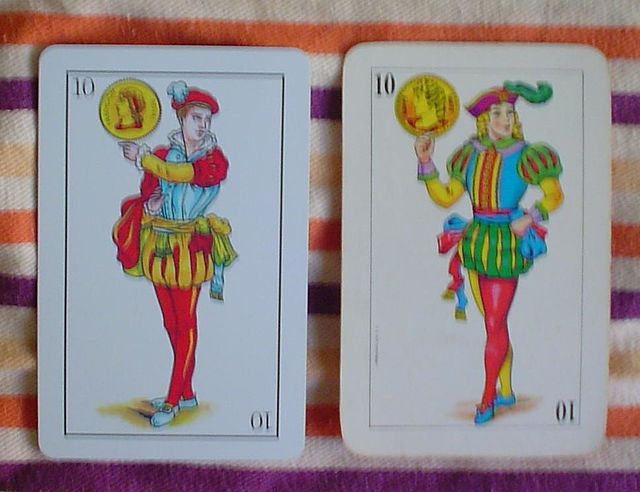Spanish-suited playing cards
Spanish-suited playing cards or Spanish-suited cards have four suits, and a deck is usually made up of 40 or 48 cards. It is categorized as a Latin-suited deck and has strong similarities with the Portuguese-suited deck, Italian-suited deck and some to the French deck. Spanish-suited cards are used in Spain, southern Italy, parts of France, Hispanic America, North Africa, and the Philippines.
Castilian pattern introduced by Heraclio Fournier
Toledo pattern cards from 1574. They are closely related to the Seville and Franco-Spanish patterns.
Valencia pattern cards from 1778. They are closely related to the Old Catalan pattern.
Knave of coins, Castilian (left) and Mexican (right)
In playing cards, a suit is one of the categories into which the cards of a deck are divided. Most often, each card bears one of several pips (symbols) showing to which suit it belongs; the suit may alternatively or additionally be indicated by the color printed on the card. The rank for each card is determined by the number of pips on it, except on face cards. Ranking indicates which cards within a suit are better, higher or more valuable than others, whereas there is no order between the suits unless defined in the rules of a specific card game. In a single deck, there is exactly one card of any given rank in any given suit. A deck may include special cards that belong to no suit, often called jokers.
The four French-suited playing cards suits used in the English-speaking world: diamonds (♦), clubs (♣), hearts (♥) and spades (♠)
The aces of a four-color deck






